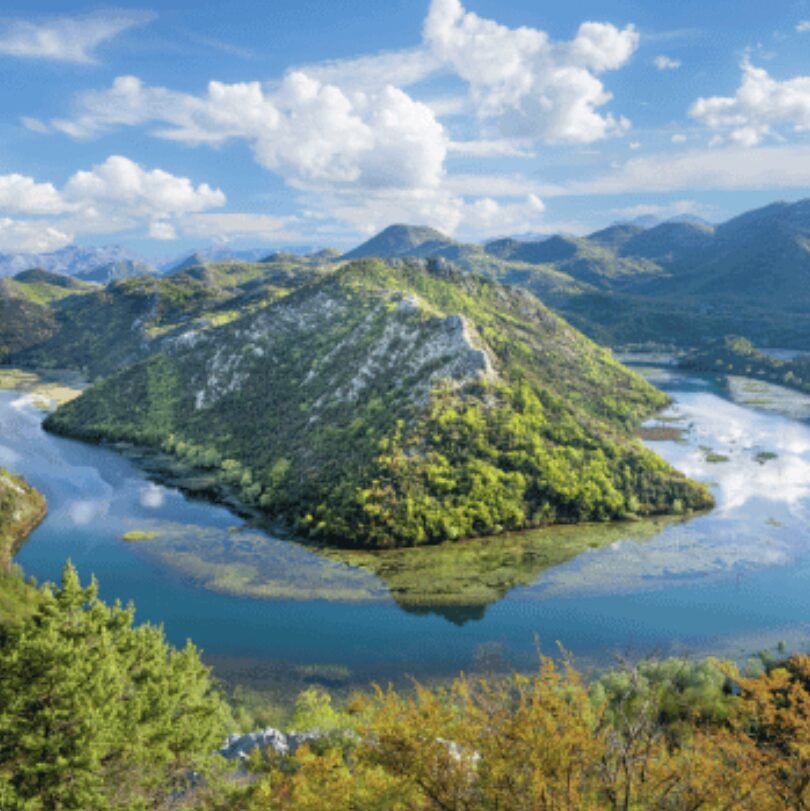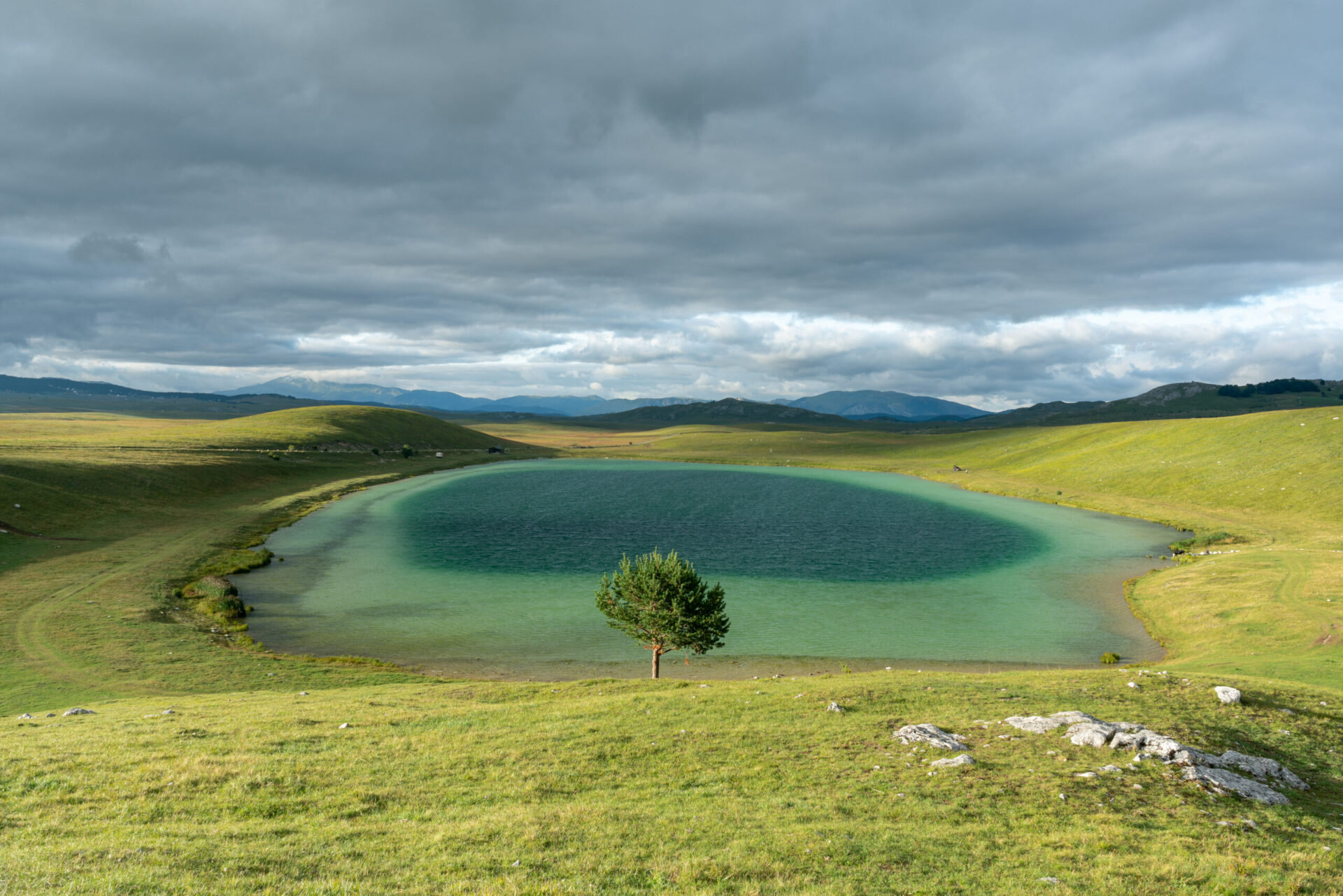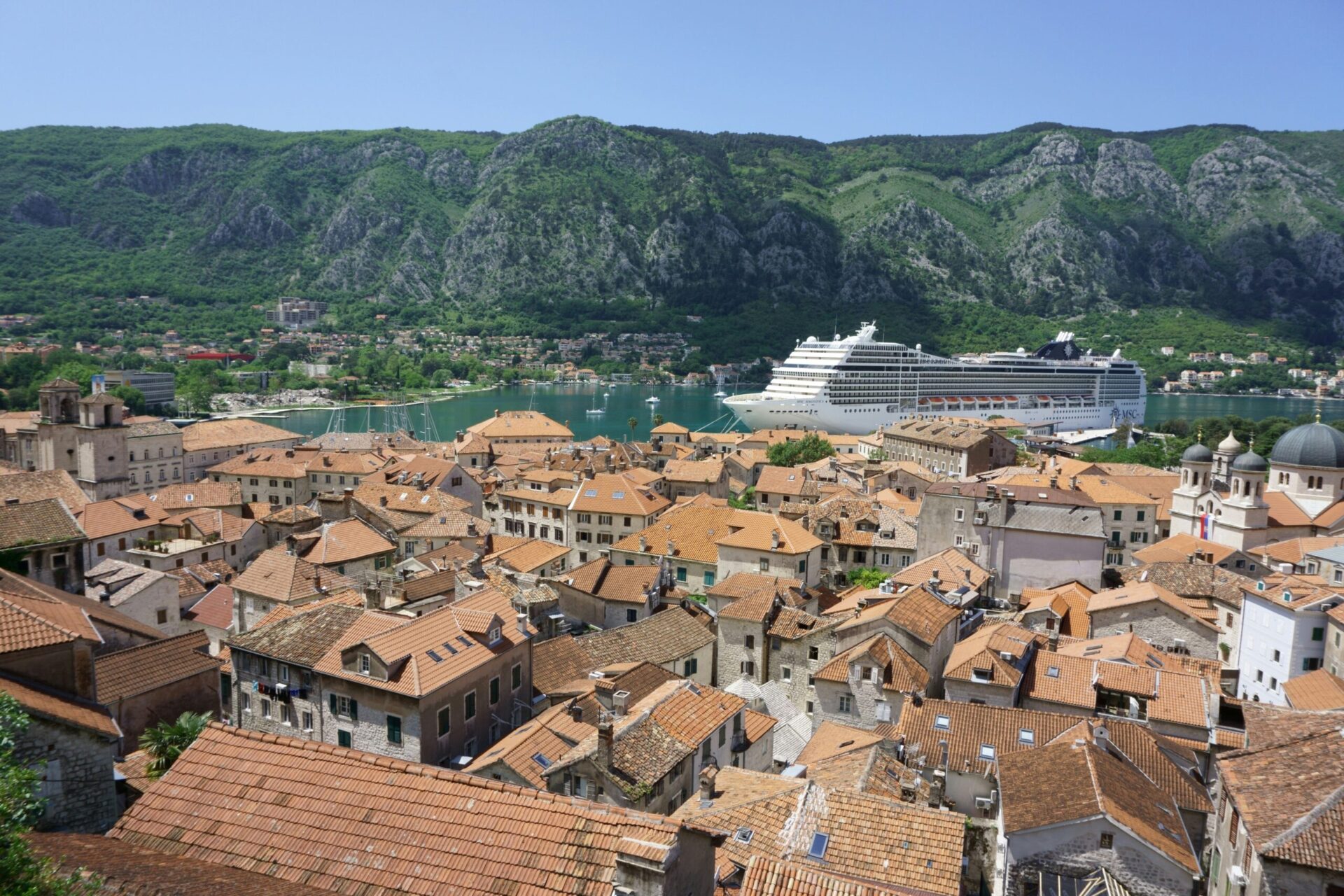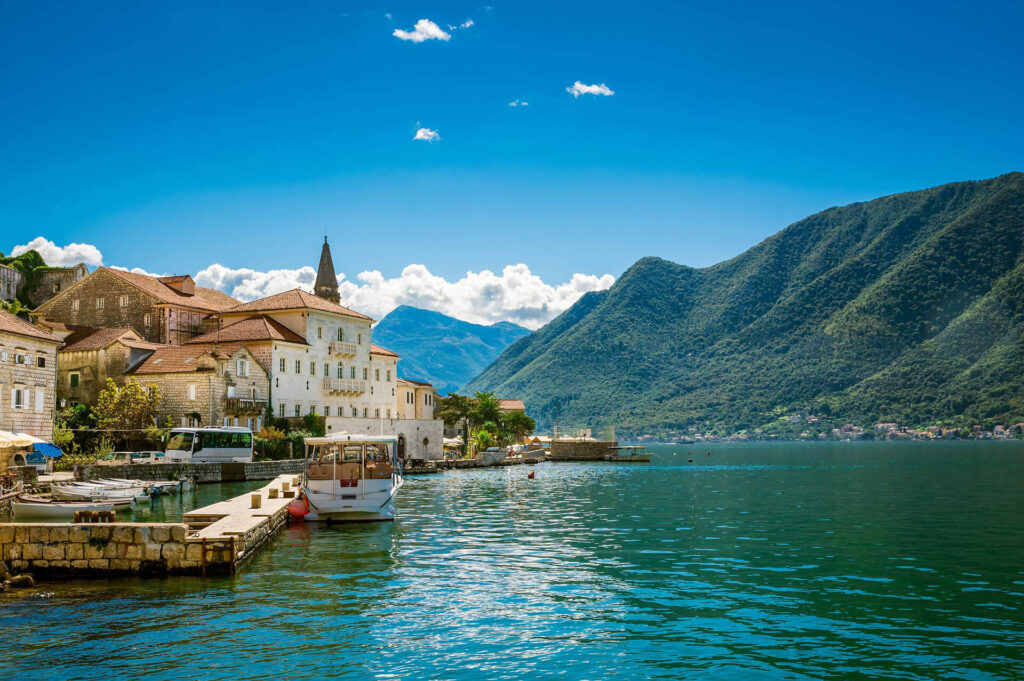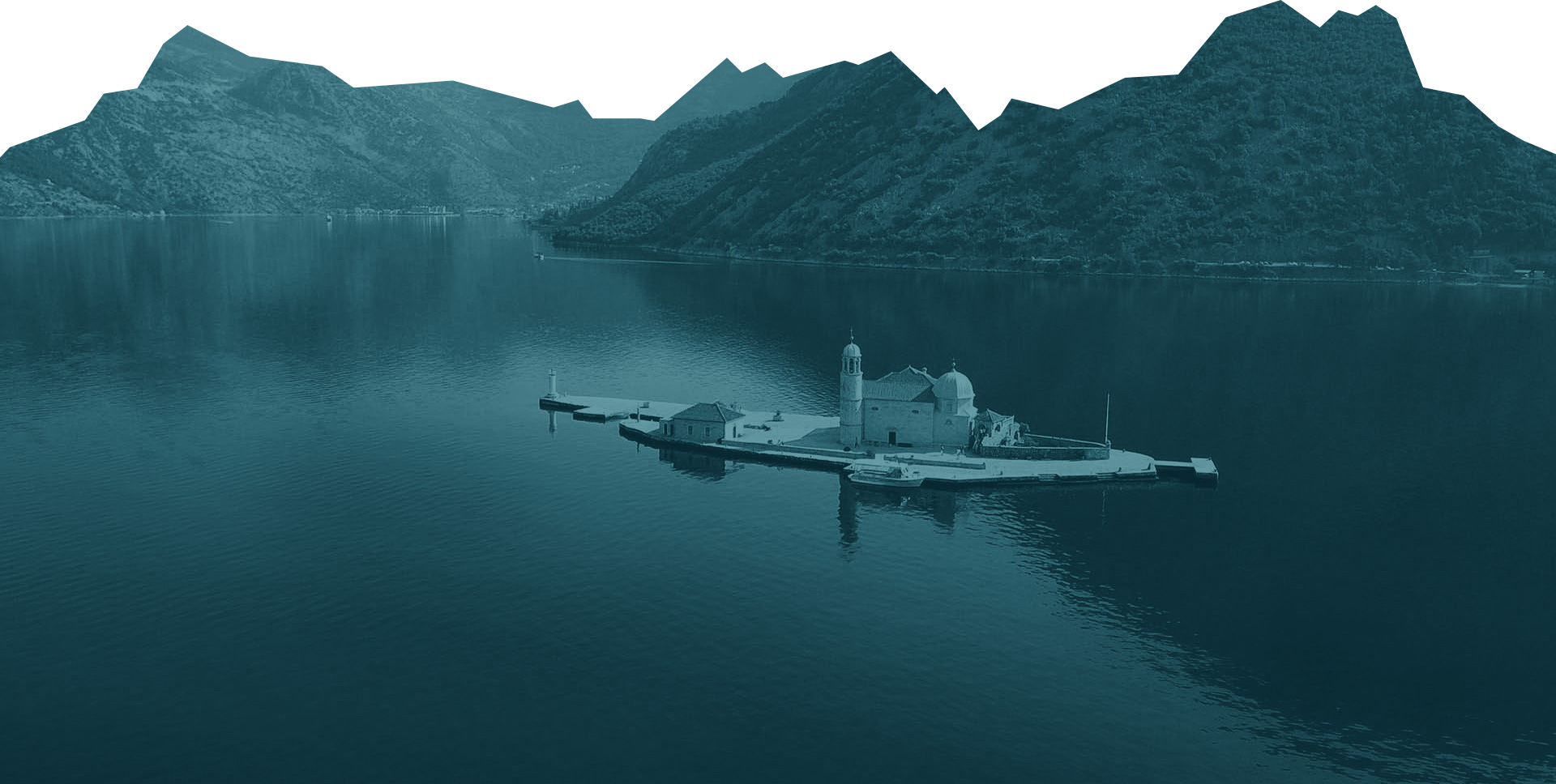What are the main reasons to visit Bay of Kotor? One of Montenegro’s famous landmarks is the Bay of Kotor, which is 28km or 15 nautical miles long. The Bay of Kotor, also known as Boka Kotorska, is the largest Adriatic bay between Montenegro and Croatia.
The Bay of Kotor is an incredible travel destination because of its magnificent scenery. Although it is not technically a fjord, it resembles one, with green mountains providing a beautiful backdrop to the blue waters of the bay. Many of the cities, towns and villages surrounding the bay are medieval in nature and perfectly preserved. Here are the reasons to visit the Bay of Kotor:
KOTOR
Located in the one of the gulfs of the Bay of Kotor, the city of Kotor is the most well-known historical landmark of Montenegro. The Roman Empire was present here since the 3rd century BC. During the Byzantine period, the town was fortified with impressive city walls, which stretched 4.5 km along the shoreline of the Kotor Bay.
The Kotor Fortress rightfully takes its place in the UNESCO World Heritage list. Four centuries of Venetian period gave the city its typical Venetian look, and Venetian influence remains predominant in the city architecture.
PERAST
The small town of Perast is yet another historical center of Montenegro. Numerous palaces, churches, fortresses, and fortifications were built in Perast between 1420 and 1797. Most of them are preserved to this day. There are two small islands near Perast. One of them is called St. George, also known as Ostrvo Sveti Ðorde — the island with a picturesque Benedictine abbey built in the center. There is another island located 115 meters northeast of St. George Island called Gospa od Škrpjela or Our Lady of the Rocks. It is the only man-made island in the Adriatic.
There are daily trips available to Our Lady of the Rocks, where you will find a catholic church and museum of gifts that sailors have left when they travel through the bay.
RISAN
Another of the four gulfs of Boka is Risan, where you can find the oldest urban center in the inner part of the Bay of Kotor. The town used to be the throne capital of the Illyrian state in the 3rd century BC, at the time of Queen Teuta. The Romans occupied the town in 167 AD, and after the emperor Diocletian’s reforms, it became part of the province of Dalmatia.
In Risan, there are several archaeological findings from the classical period. The remains of cyclopean walls have been found, as have those of the houses and streets of a place called Carine. In the very center of the town, the remains of the Roman Villa Urbana with its floor mosaics have been discovered. The Villa was probably built in the 2nd century AD. The mosaics contain geometrical and vegetable motifs, as well as the exceptionally rare presentation of the classical God of Sleep–Hypnos.
LIPCI
Paintings of prehistoric man have been found in Lipci, near Risan. These paintings were found in one part of a rock which remained after a rockfall in the cave. It shows two hunters riding horses while throwing a spear at five stags and one doe. There are also geometric patterns. The pictures were engraved with flintstone into the limestone rock.
The age of these images is unknown. Experts believe them to be of Mesolithic origin. This puts them at some 10,000 years old. Lipci Cave is located above the small village Lipci, above the Bay of Kotor. To find it, follow the old coast road towards Risan, and turn at the first left in Lipci. Follow the road to the end, then the trail uphill. Alternatively, there is a parking possibility at the new road, and a trail down towards the cave.
PRCANJ
Just 5 km (3 miles) away from Kotor, you’ll come across the charming town of Prčanj. Accessible only via a one-way road, Prčanj is far off the beaten track, making it a treasure worth exploring. You can tour some religious structures, including the Orthodox St. Peter’s Church and the Birth of Our Lady church. Visiting Prčanj means having the chance to stroll through small streets with locals, pick up inexpensive souvenirs at the local post office and dine or drink with residents at the handful of tiny restaurants in the area.
HERCEG NOVI
At the entrance of the Bay of Kotor is Herceg Novi and also one of the four gulfs of Boka. In Herceg Novi’s Stari Grad, or Old Town, you will be treated to a variety of historic and cultural attractions. St. Jerome’s Church, also known as Trg Mića Pavlovića, is a beautiful 19th century Catholic building. Nearby, the Archangel Michael’s Church is the Orthodox equivalent and was built in the same time. Just outside of the city is the Savina monastery, which dates to the 14th century and offers some of the most amazing views over the bay.
MORINJ
Morinj offers beautiful scenery, relaxing recreation and delicious cuisine, located halfway between Herceg Novi and Kotor. A highlight of Morinj is its small, sheltered beach. An iconic landmark in Morinj is the St. Petka’s Church, known to locals as Crkva Svete Petke. Its silver dome is easy to spot, creating a reflection whenever the sun hits it. One of the most romantic and appetizing restaurants is located in Morinj.
Ćatovića Mlini, meaning the Ćatović’s mills, offers an excellent menu, which mainly includes fish dishes with the backdrop of magical scenery(food has been my favorite reason to visit Bay of Kotor).
TIVAT
Located in one of the gulfs of the Bay of Kotor, Tivat is the home a major international airport (TIV). What was once an old naval base has recently transformed into a sophisticated, elegant and upscale marina called Porto Montenegro. You can walk along the edge of the marina, soak in the sun and admire dozens of yachts owned by the rich and famous who come to Tivat for its climate and atmosphere.
When you visit Montenegro, have plenty of reasons to visit Bay of Kotor, and add it on your itinerary. We offer various walking and private tours that fit your interests.
